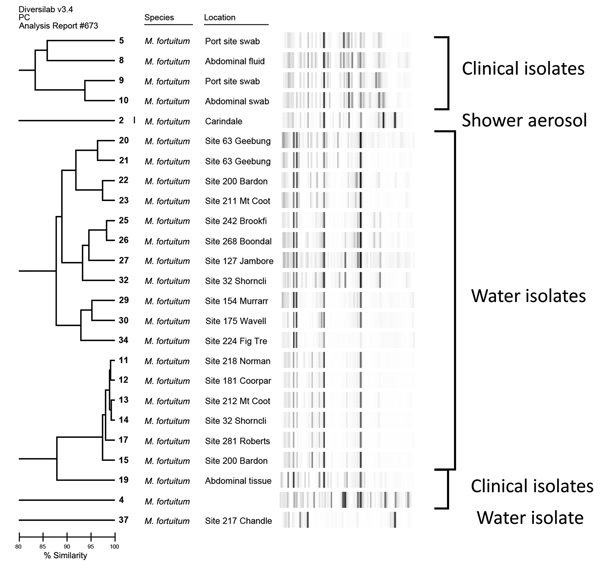Volume 20, Number 10—October 2014
CME ACTIVITY - Synopsis
Rapidly Growing Mycobacteria Associated with Laparoscopic Gastric Banding, Australia, 2005–2011
Figure 3

Figure 3. Repetitive sequence–based PCR dendrogram demonstrating differences between Mycobacterium fortuitum isolates associated with lap band infections and M. fortuitum isolated from water samples. Scale bar indicates % similarity. Source: DiversiLab v. 3.4 PC #675.
Page created: September 12, 2014
Page updated: September 12, 2014
Page reviewed: September 12, 2014
The conclusions, findings, and opinions expressed by authors contributing to this journal do not necessarily reflect the official position of the U.S. Department of Health and Human Services, the Public Health Service, the Centers for Disease Control and Prevention, or the authors' affiliated institutions. Use of trade names is for identification only and does not imply endorsement by any of the groups named above.